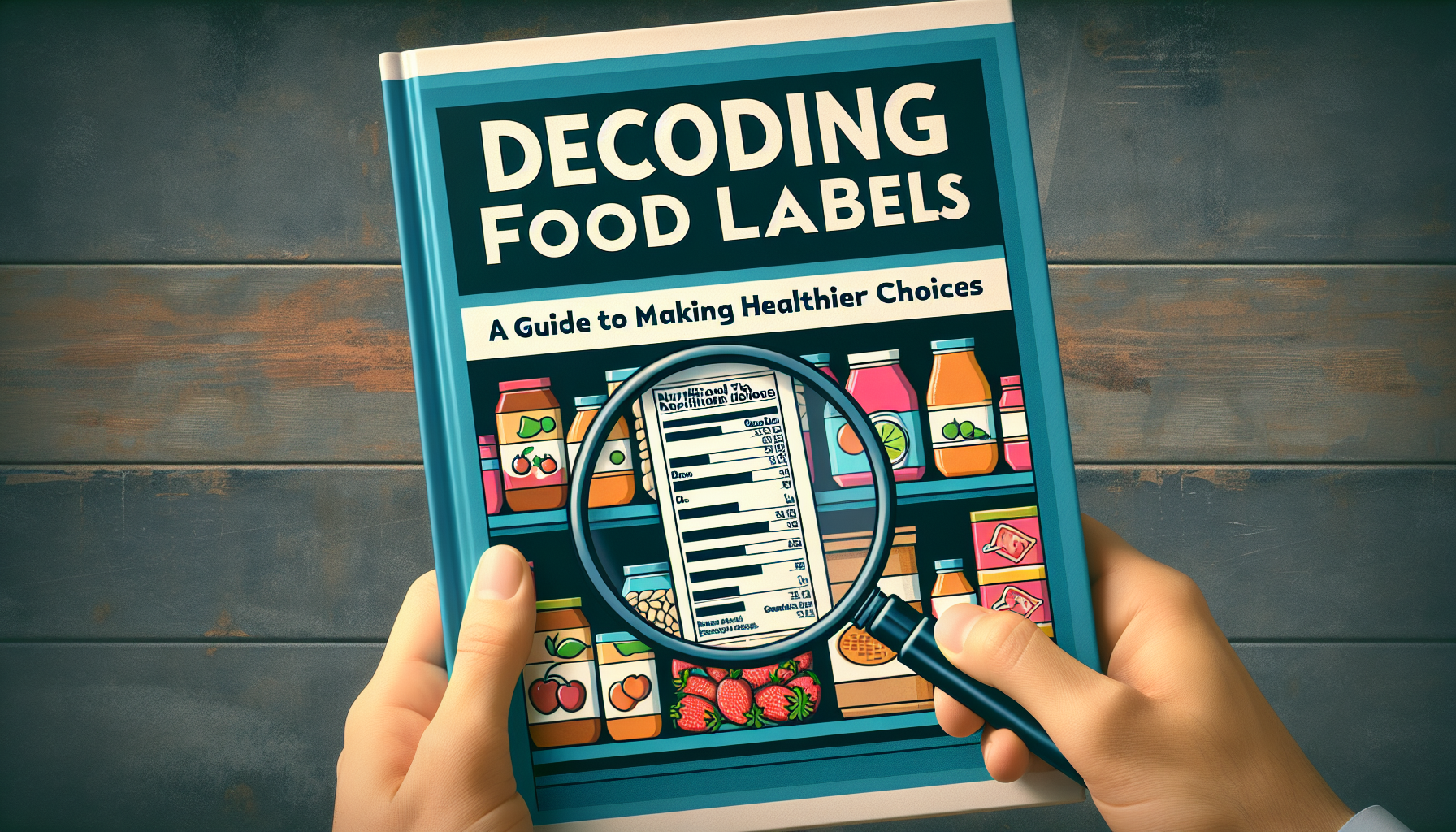Food
Decoding Food Labels: A Guide to Making Healthier Choices

Are you confused every time you step into the grocery store? You’re not alone! Deciphering food labels can feel like trying to crack an ancient code. But fear not! This handy guide will break it down for you, helping you make healthier choices without the headache. Let’s dive right in!
Understanding Food Labels: The Basics
Food labels are your secret weapon for making informed choices. They’re packed with information about what you’re putting into your body. From the ingredient list to nutritional facts, these labels have it all. Here’s a quick breakdown of what to look for!
Nutrition Facts
The Nutrition Facts label is a must-check. It provides essential information about macronutrients (carbs, fats, and proteins) and critical vitamins and minerals.
-
Serving Size: Always check the serving size first. The rest of the information relates to this number, so don’t fall into the trap of assuming a package contains a single serving. Often, it doesn’t!
-
Calories: This tells you how many calories you’re consuming per serving. Keep an eye on this if you’re watching your weight.
-
Macronutrients:
- Total Fat: Look for types of fat. Unsaturated fats (found in olive oil, nuts) are healthier than saturated and trans fats.
- Total Carbohydrates: Pay attention to added sugars and fiber here. A higher fiber count usually means a healthier option!
- Protein: This is critical for muscle repair and energy. High-protein foods can keep you satisfied longer.
Ingredients List
Next up is the ingredients list. This can be your best friend or your worst enemy. Here are some tips to decode it:
-
Order Matters: Ingredients are listed by quantity. The first few items are the most significant ingredients. If sugar or unhealthy fats are at the top, steer clear!
-
Look for Whole Foods: Whole ingredients like “whole wheat” or “oats” are better than "enriched flour" or "high fructose corn syrup."
-
Chemical Names: If you can’t pronounce it, chances are it’s best avoided. Stick with shorter, recognizable ingredients.
Health Claims and Labels
You may spot various health claims like “low fat,” “heart-healthy,” or “sugar-free.” Here’s what you need to know about these claims:
-
“Natural”: This term isn’t regulated, so it can mean anything or nothing. Don’t take it as a guarantee of healthiness.
-
“Low Fat” or “Reduced Fat”: These items may compensate with added sugars. Sometimes, the "fat" is reduced, but the taste is increased with sugar.
-
“Organic”: While organic foods must meet strict standards, it doesn’t automatically mean healthier. Always check the ingredients!
Making Healthier Choices: Smart Tips
Read Labels Like a Pro
-
Create a Label Checklist: Write down what’s essential for you—a certain number of calories, types of fats, etc. This can guide you through the aisles without getting overwhelmed.
-
Keep a Food Journal: Often, simply tracking what you eat can help you identify healthier patterns. This can be through an app or just a simple notebook.
Bulk Buying vs. Single Purchase
You might think buying in bulk is always the better choice, but check those labels carefully! Sometimes, larger packages can have more preservatives or sugars to keep them shelf-stable.
- Check Expiration Dates: Fresh produce sellers often post tighter expiration dates, ensuring quality. Bulk packaged foods might last, but the quality could drop off quicker than you think.
Don’t Be Fooled by Marketing
It’s easy to fall prey to fancy packaging. Remember that flashy claims don’t always mean what they say.
- Compare Similar Products: Don’t just grab the first item that appeals to you. Compare the labels of similar products; you may find a healthier option at a similar price point.
Take Advantage of Resources
Feeling lost? Plenty of resources can help you navigate food choices better.
-
USDA’s Food Data Central: A fantastic resource to learn about foods and their nutritional values. (Check it out here)
-
Pew Research on Food Trends: Stay updated with the latest studies on food consumption trends and health impacts (Pew Research).
-
Check out our article on Healthy Eating on a Budget for creative ways to maintain your budget while eating healthier!
Conclusion: You’ve Got this!
Understanding food labels may take a little practice, but soon, you’ll feel empowered to make choices that align with your health goals. Remember, knowledge is power. The next time you’re roaming the grocery aisles, take a moment to decode those food labels, and you’ll be amazed at how much more informed you’ll be.
In a world filled with fast food and processed snacks, making healthier choices is more crucial than ever. So go ahead, take control, and enjoy a balanced lifestyle that makes you feel great inside and out! Happy label reading!
-

 News22 hours ago
News22 hours agoTeenage US Citizen Records Brutal Arrest by Immigration Agents Who Told Him, ‘You Have No Rights’
-
News21 hours ago
Maltese Police Officers Participate in Operation in the Black Sea
-

 Business22 hours ago
Business22 hours agoNavigating the Economic Landscape: Key Insights from Today’s Business Headlines
-

 News20 hours ago
News20 hours ago“Honoring Ukraine: A Tribute” (July 26, 2025) — dynamo.kiev.ua
-

 Entertainment22 hours ago
Entertainment22 hours agoCinematic Success: Fun Facts About Movies That Shaped the Film Industry
-

 Business19 hours ago
Business19 hours agoThe Top 10 Business Opportunities to Watch in 2025
-

 Business21 hours ago
Business21 hours agoNavigating the Shifting Sands: Key Global Economic Trends for 2024
-

 Entertainment21 hours ago
Entertainment21 hours agoBehind the Magic: Unveiling the Secrets of Iconic Film Productions
